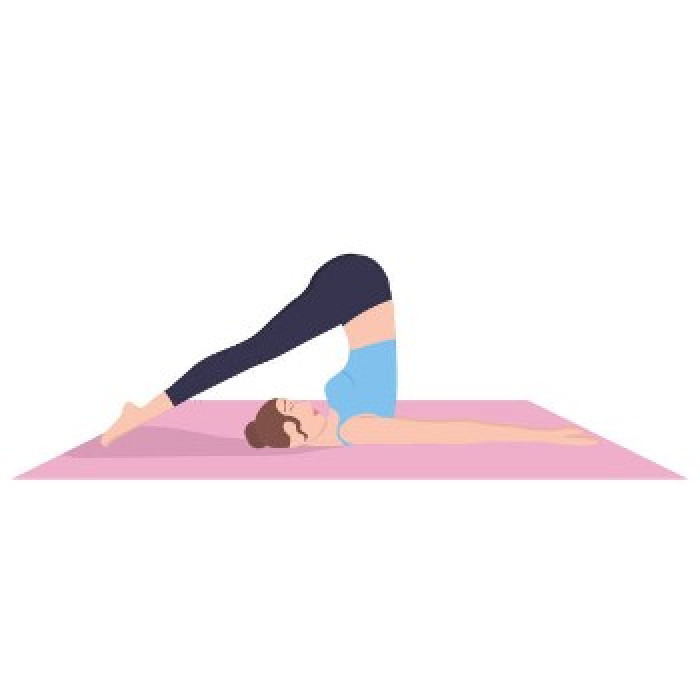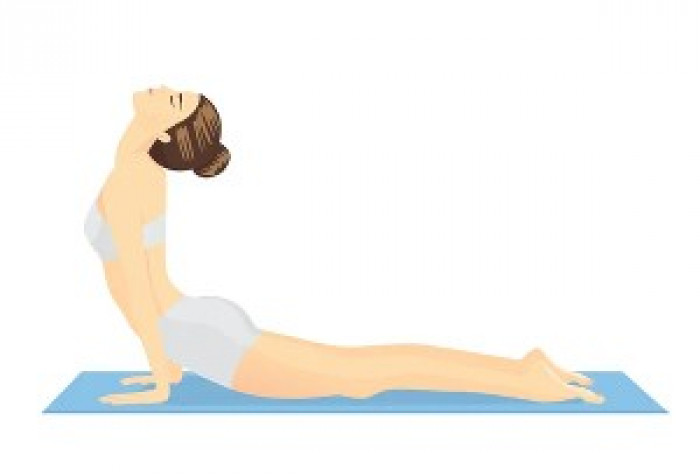Introduction - The thyroid gland is a small butterfly-shaped gland located in the neck that plays a crucial role in regulating metabolism and other bodily functions. Thyroid disorders are a common problem affecting millions of people worldwide. Yoga, an ancient practice originating from India, has gained popularity in recent years as a complementary therapy for various health conditions, including thyroid disorders. This article will explore the benefits of yoga for thyroid health, including how yoga can help improve thyroid function and reduce symptoms of thyroid disorders. By incorporating yoga into their daily routine, individuals with thyroid issues can improve their overall health and well-being. Join the Yoga Teacher Training in Bali.
Thyroid disorders refer to conditions that affect the function of the thyroid gland. The thyroid gland produces hormones that regulate metabolism and other bodily functions, and when it doesn't function properly, it can lead to a range of health problems. The most common types of thyroid disorders include:
1. Hypothyroidism: This occurs when the thyroid gland does not produce enough thyroid hormones. Common symptoms include fatigue, weight gain, constipation, dry skin, and sensitivity to colds.
2. Hyperthyroidism: This occurs when the thyroid gland produces too much thyroid hormone. Common symptoms include weight loss, increased appetite, rapid heartbeat, nervousness, and sweating.
3. Thyroid nodules: These are lumps that form in the thyroid gland. While most nodules are benign, some can be cancerous.
The causes of thyroid disorders vary depending on the type of disorder. Hypothyroidism can be caused by an autoimmune disorder called Hashimoto's thyroiditis, radiation therapy, or surgery to remove the thyroid gland. Hyperthyroidism can be caused by an autoimmune disorder called Graves' disease, thyroid nodules, or inflammation of the thyroid gland. Thyroid nodules can be caused by iodine deficiency, inflammation, or genetic factors. If left untreated, thyroid disorders can lead to serious health complications, including heart disease, infertility, and osteoporosis.
Yoga can help improve thyroid function by reducing stress and improving blood flow to the thyroid gland. Stress has been shown to negatively impact thyroid function, and yoga can help reduce stress levels through deep breathing, meditation, and relaxation techniques. In addition, certain yoga poses can stimulate the thyroid gland and improve blood flow to the area, which can help improve thyroid function.
Yoga can benefit people with thyroid disorders in several ways. Here are a few examples:
1. Reducing stress and anxiety: Yoga is known to be a stress-relieving practice, which can help improve the mental and emotional health of people with thyroid disorders. Reducing stress levels can also help improve thyroid function.
2. Improving metabolism: Certain yoga poses can help stimulate the thyroid gland, which can improve metabolism and energy levels for people with hypothyroidism.
3. Increasing relaxation and calmness: Yoga can help improve relaxation and calmness, which can help reduce symptoms of hyperthyroidism, such as rapid heartbeat and nervousness.
4. Improving overall well-being: Yoga has been shown to improve overall health and well-being, which can benefit people with thyroid disorders.
Scientific evidence supports the benefits of yoga for thyroid health. A study published in the International Journal of Yoga Therapy found that practicing yoga regularly for six months improved thyroid function in people with hypothyroidism. Another study published in the Journal of Ayurveda and Integrative Medicine found that yoga can improve thyroid function in people with subclinical hypothyroidism. These studies suggest that yoga can be an effective complementary therapy for people with thyroid disorders.
There are several yoga poses that can benefit thyroid health. Here are some of the best yoga poses for the thyroid:

1. Shoulderstand (Sarvangasana): This pose can help improve blood flow to the thyroid gland.
- Lie on your back and lift your legs up towards the ceiling.
- Support your back with your hands and lift your hips off the ground.
- Straighten your legs and hold the pose for a few breaths.
- Release the pose slowly and rest for a few breaths.

2. Fish Pose (Matsyasana): This pose can help stimulate the thyroid gland and improve metabolism.
- Lie on your back and place your hands under your hips.
- Press your elbows into the ground and lift your chest towards the ceiling.
- Hold the pose for a few breaths and then release.

3. Plow Pose (Halasana): This pose can help improve blood flow to the thyroid gland.
- Lie on your back and lift your legs up towards the ceiling.
- Lower your legs over your head and try to touch your toes to the ground behind your head.
- Hold the pose for a few breaths and then slowly release it.

4. Camel Pose (Ustrasana): This pose can help stimulate the thyroid gland and improve energy levels.
- Kneel on the ground with your knees hip-width apart.
- Place your hands on your lower back and lean back, arching your back.
- Hold the pose for a few breaths and then slowly release it.

5. Cobra Pose (Bhujangasana): This pose can help improve blood flow to the thyroid gland.
- Lie on your stomach with your hands under your shoulders.
- Press into your hands and lift your chest off the ground.
- Hold the pose for a few breaths and then slowly release it.
Pictures or videos of each pose can be found online to provide further clarity on how to perform each pose correctly. It's important to note that it's best to practice these poses under the guidance of a qualified yoga teacher to ensure proper form and safety.
There are several types of yoga practices that can help improve thyroid function:
- Hatha Yoga: Hatha yoga focuses on physical postures and breathing exercises. Practicing hatha yoga regularly can help improve blood flow to the thyroid gland and reduce stress levels.
- Restorative Yoga: Restorative yoga involves gentle, relaxing poses that help reduce stress and promote relaxation. Restorative yoga can be beneficial for people with hyperthyroidism who may experience symptoms such as anxiety and restlessness.
- Pranayama: Pranayama is a breathing practice that involves controlling the breath. Practicing pranayama regularly can help reduce stress and improve overall well-being.
To integrate yoga into daily life to maintain thyroid health, it's recommended to practice yoga for at least 20-30 minutes each day. This can be done in the morning or evening, or whenever is most convenient for you. It's important to listen to your body and practice yoga in a way that feels comfortable and safe.
Here are some tips for beginners to get started with yoga for the thyroid:
- Start slow: If you're new to yoga, start with gentle poses and gradually work your way up to more advanced poses.
- Practice regularly: Consistency is key when it comes to practicing yoga. Aim to practice yoga for at least 20-30 minutes each day to see the most benefits.
- Listen to your body: It's important to listen to your body and practice yoga in a way that feels comfortable and safe for you. Don't push yourself too hard and take breaks whenever you need to.
- Find a qualified teacher: If you're new to yoga, it's recommended to find a qualified yoga teacher who can guide you through the practice and help you learn proper form.
In conclusion, incorporating yoga into daily life can be a helpful complementary therapy for people with thyroid disorders. Practicing yoga regularly can help reduce stress, improve blood flow to the thyroid gland, and promote overall well-being. By practicing the best yoga poses for the thyroid and integrating yoga practices into daily life, people with thyroid disorders can improve their thyroid function and enhance their overall health and well-being.
A healthy diet and lifestyle are important factors in maintaining thyroid health. Here are some tips for making dietary changes that can help improve thyroid function:
- Increase iodine intake: Iodine is essential for thyroid function, so it's important to include iodine-rich foods in your diet. Some examples of iodine-rich foods include seaweed, dairy products, and eggs.
- Eat a balanced diet: Eating a balanced diet that includes a variety of fruits, vegetables, whole grains, and lean proteins can help support overall health and well-being, including thyroid function.
- Avoid goitrogenic foods: Goitrogens are substances found in some foods that can interfere with thyroid function. Some examples of goitrogenic foods include cruciferous vegetables like broccoli, cauliflower, and kale. While these foods can be healthy, it's recommended to eat them in moderation if you have a thyroid disorder.
- Manage stress: Stress can have a negative impact on thyroid function, so it's important to manage stress levels through relaxation techniques like yoga, meditation, or deep breathing exercises.
In addition to dietary changes, there are also lifestyle changes that can help improve thyroid function:
- Exercise regularly: Regular exercise can help improve blood flow to the thyroid gland and reduce stress levels.
- Get enough sleep: Getting enough sleep is important for overall health and well-being, including thyroid function. Aim to get 7-8 hours of sleep each night.
- Avoid smoking and alcohol: Smoking and alcohol can have negative effects on thyroid function, so it's recommended to avoid or limit these substances.
- Manage medications: Some medications can interfere with thyroid function, so it's important to talk to your doctor about any medications you are taking and how they may affect your thyroid.
In conclusion, making dietary and lifestyle changes can be helpful in improving thyroid function. By incorporating iodine-rich foods, avoiding goitrogenic foods, managing stress, and making other healthy lifestyle changes, people with thyroid disorders can support their overall health and well-being and enhance their thyroid function.
In conclusion, yoga can be a beneficial complementary therapy for people with thyroid disorders. Yoga has been shown to improve thyroid function, reduce stress levels, and support overall health and well-being. By practicing yoga regularly and making dietary and lifestyle changes, people with thyroid disorders can enhance their thyroid function and improve their quality of life. If you have a thyroid disorder, consider talking to your doctor and a certified yoga instructor about incorporating yoga into your healthcare routine. With the right guidance and support, yoga can be a safe and effective way to support your thyroid health.
















